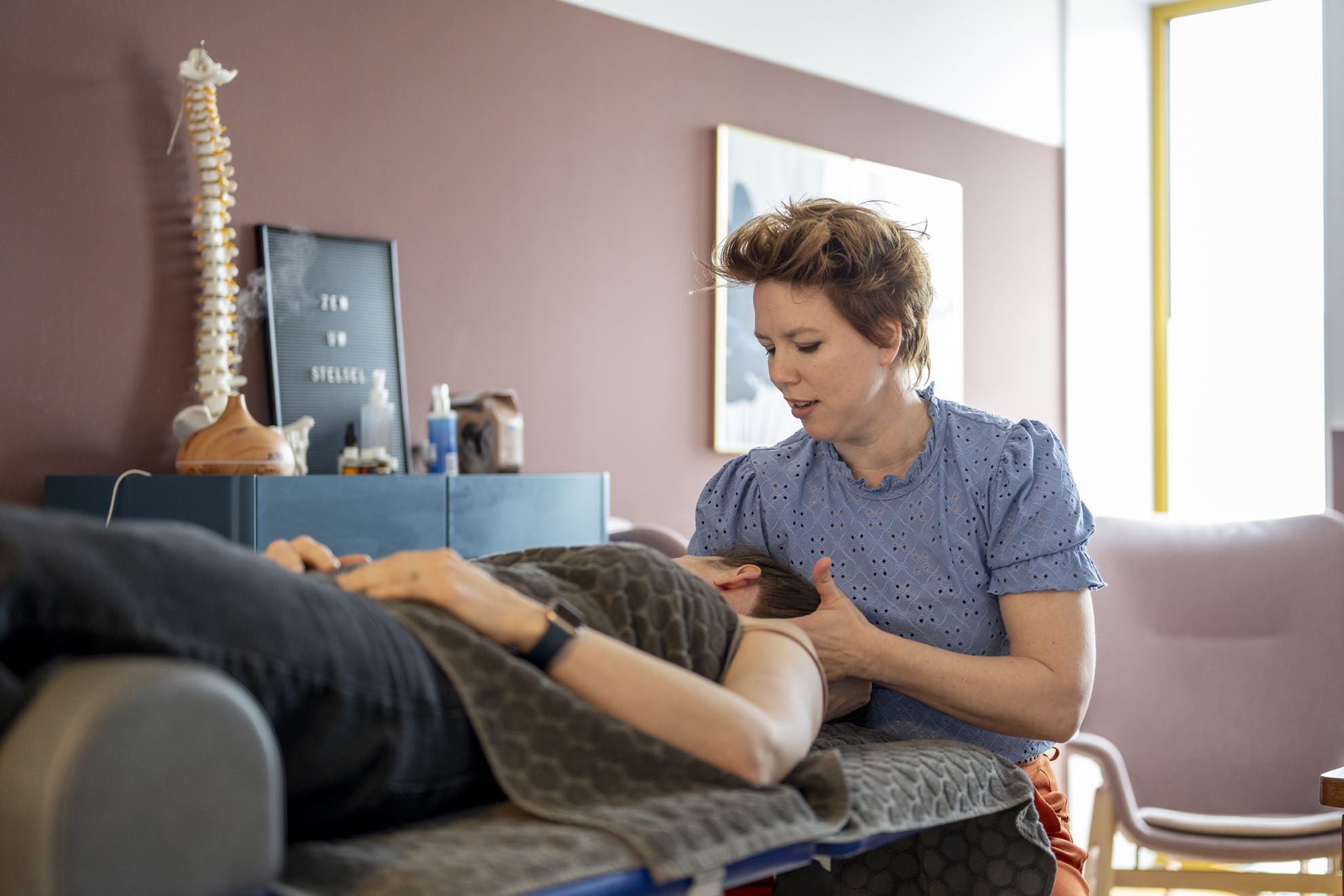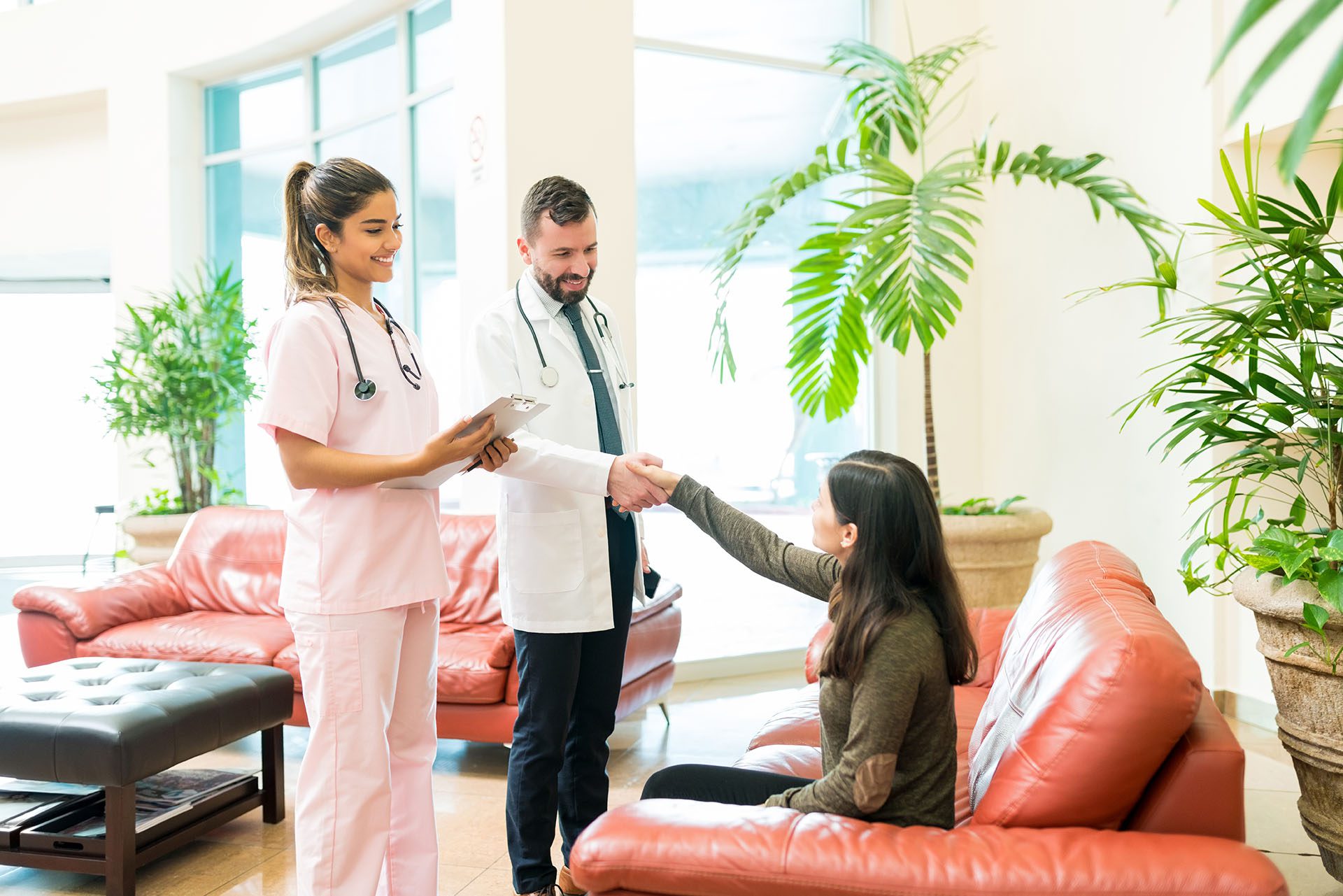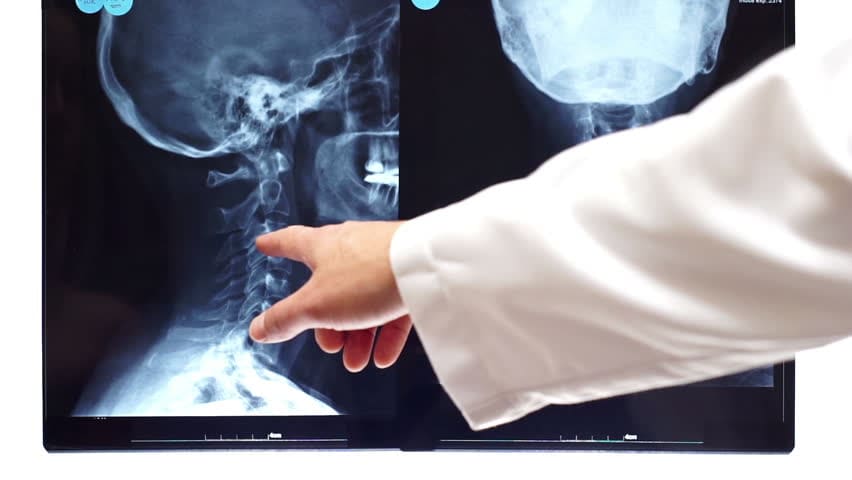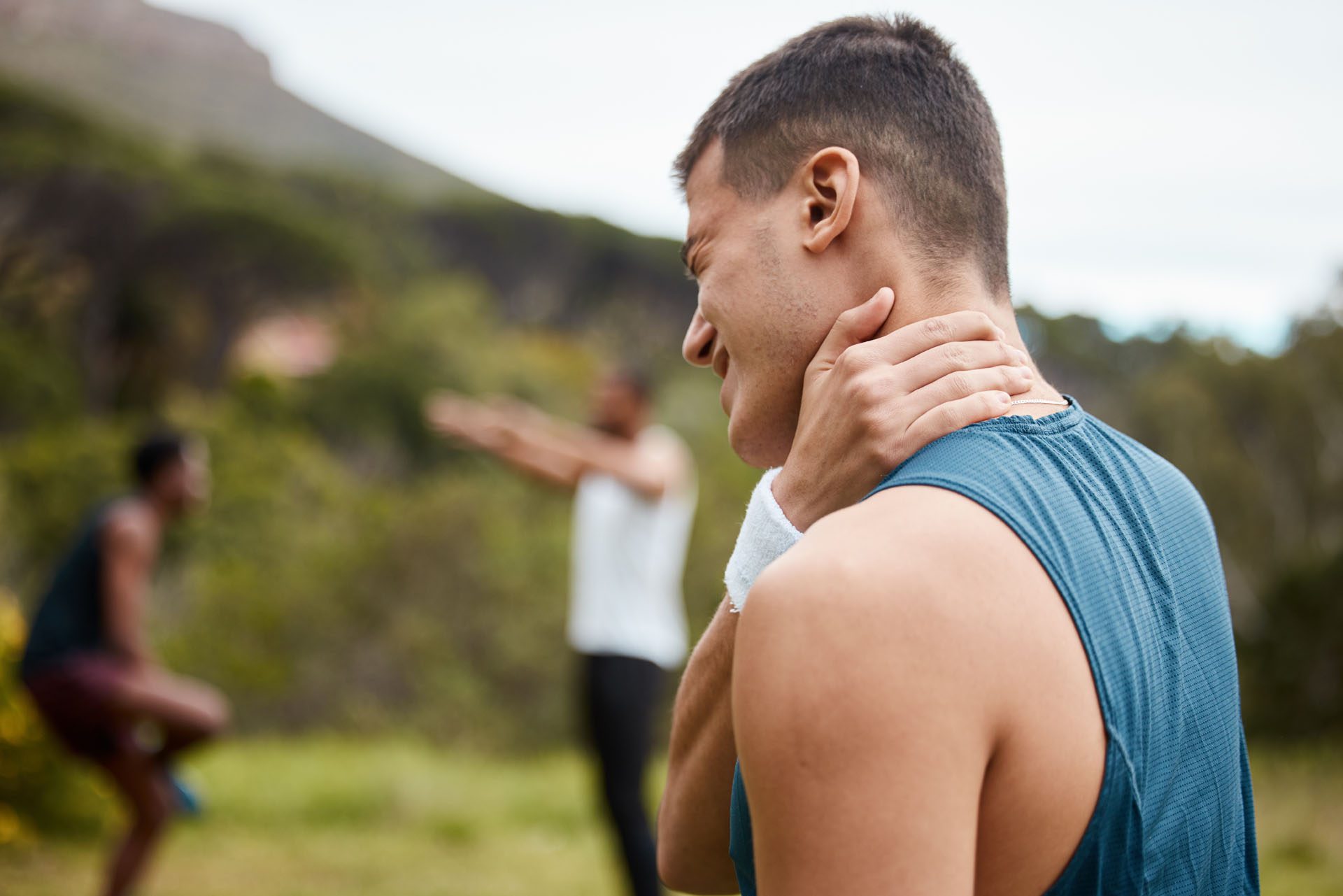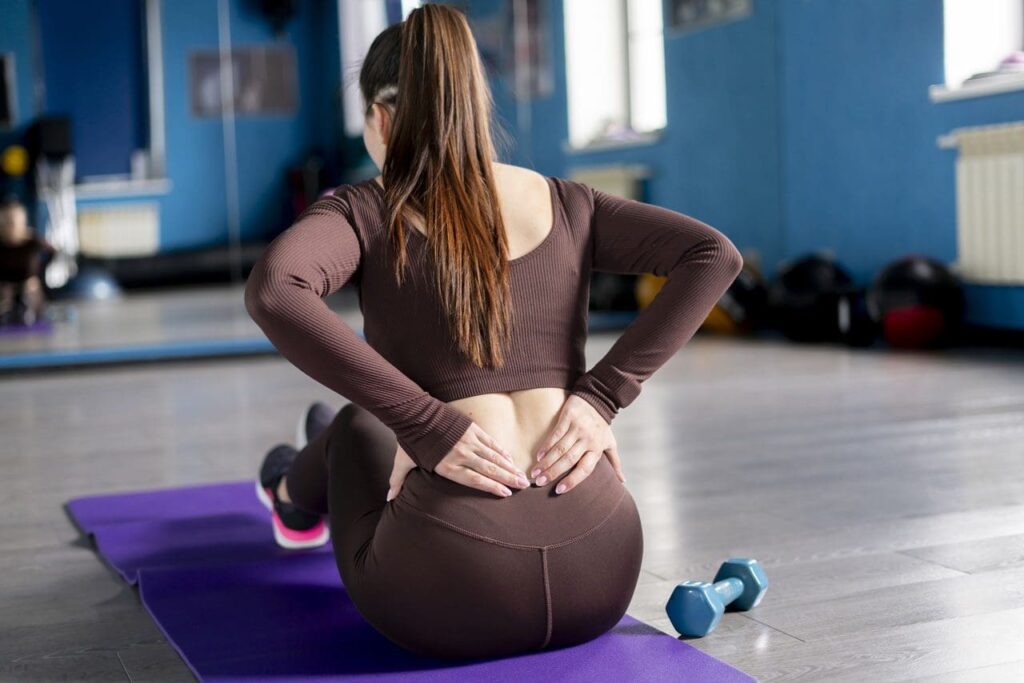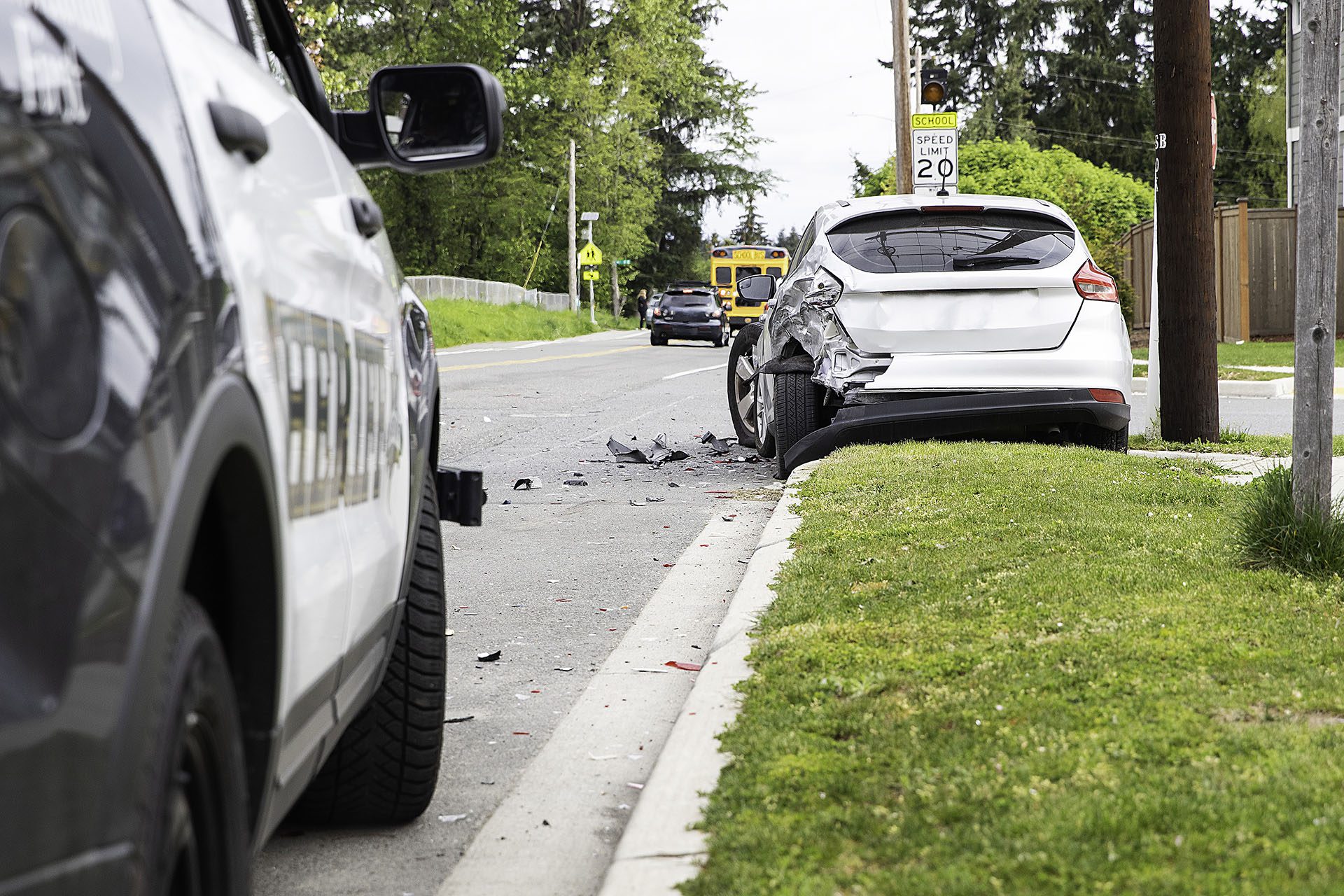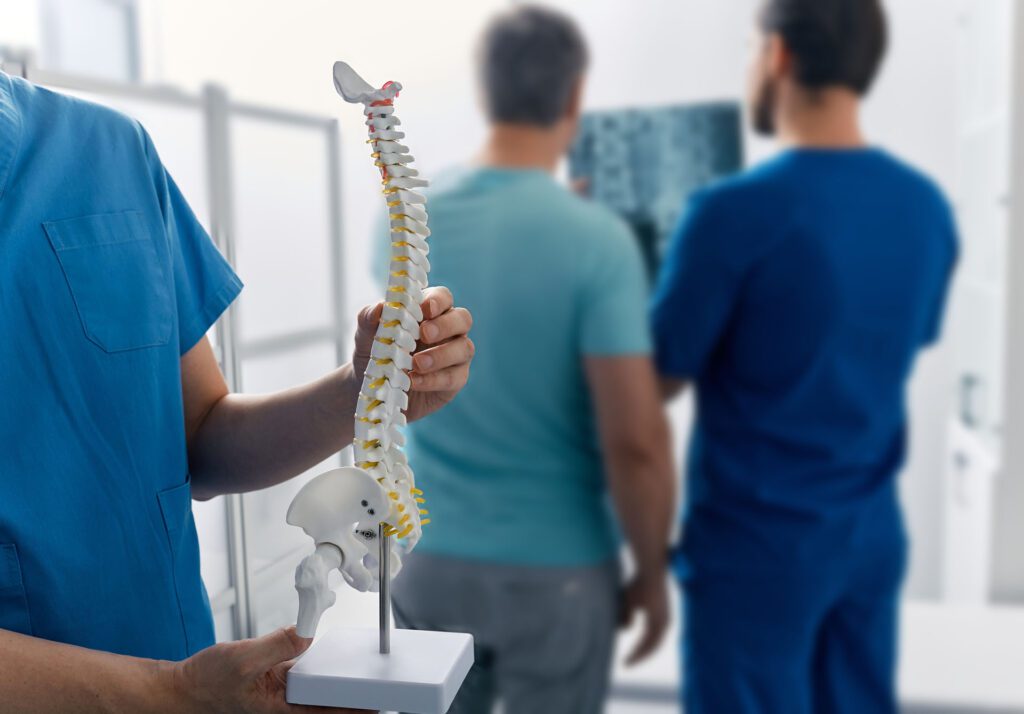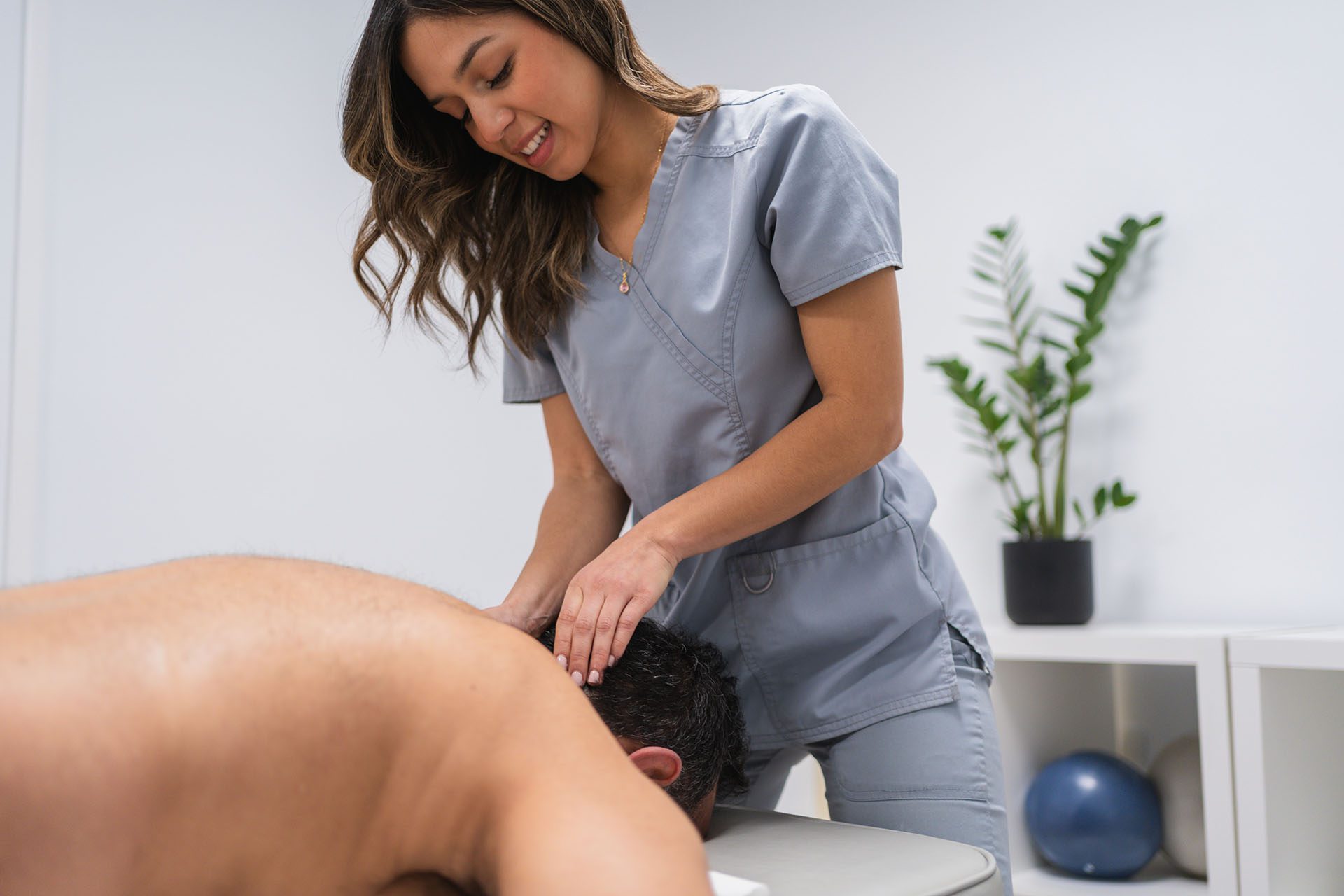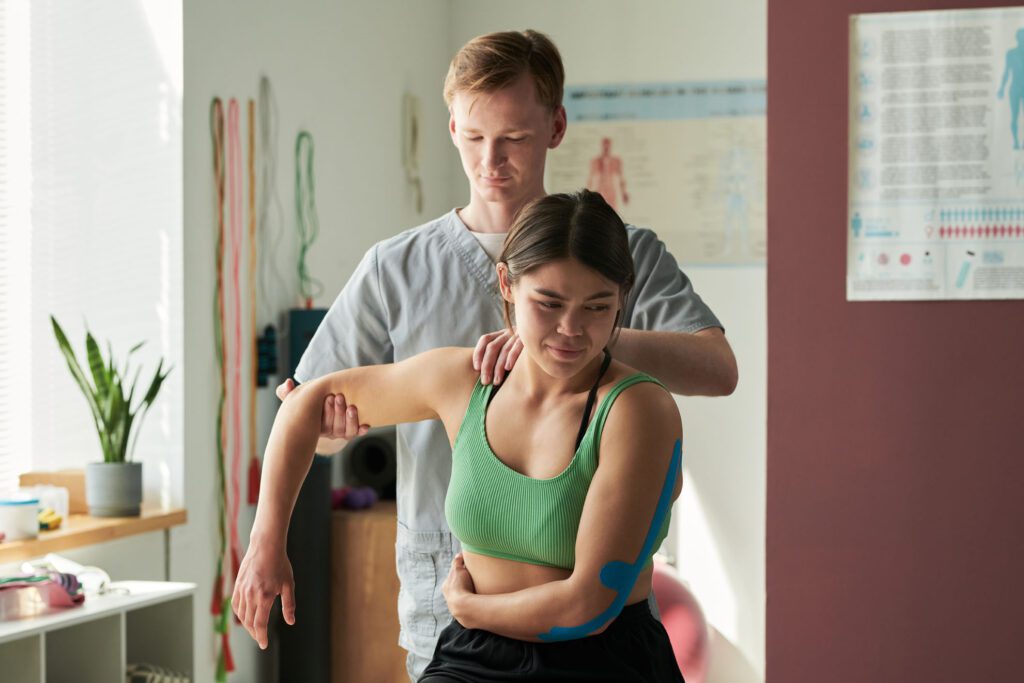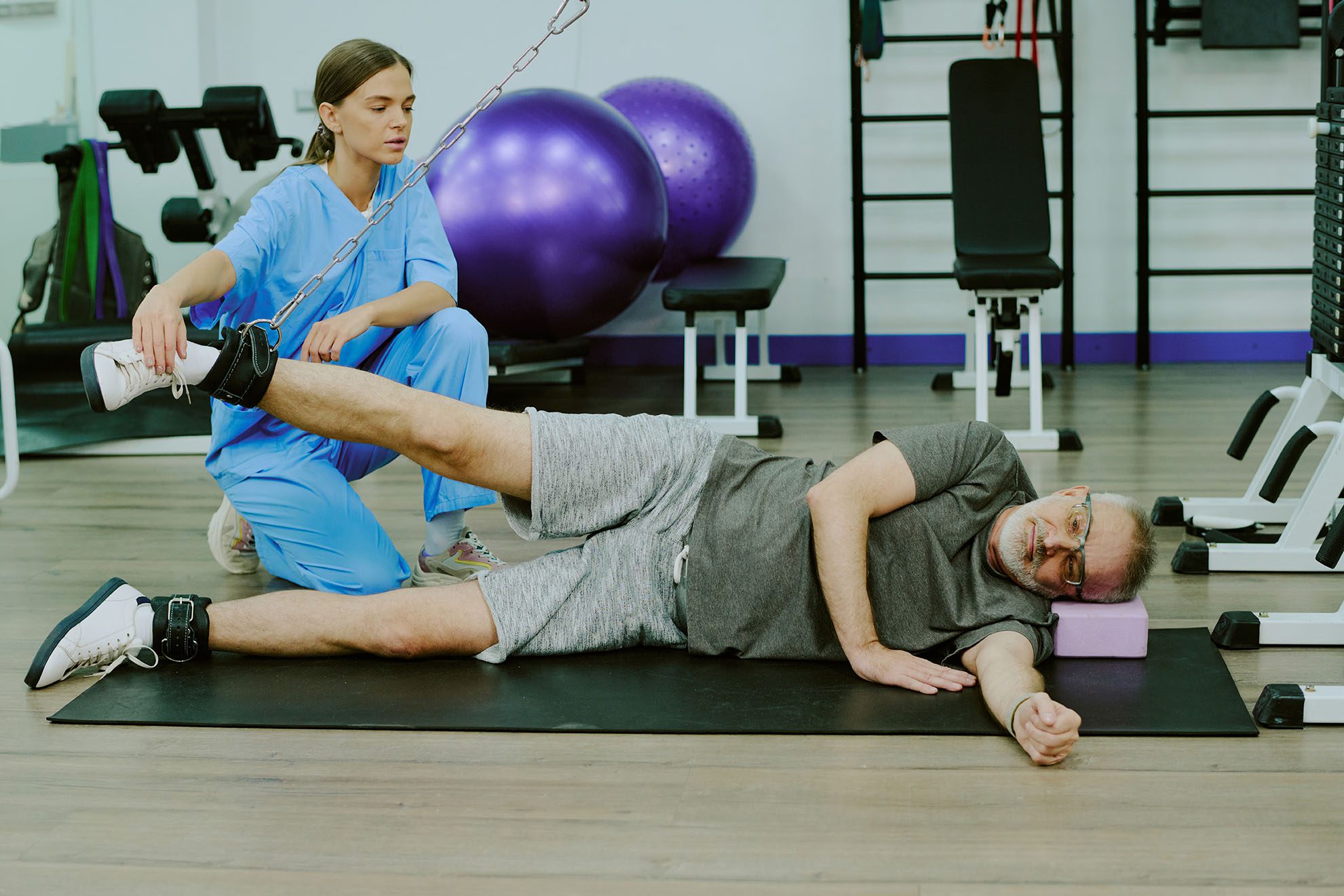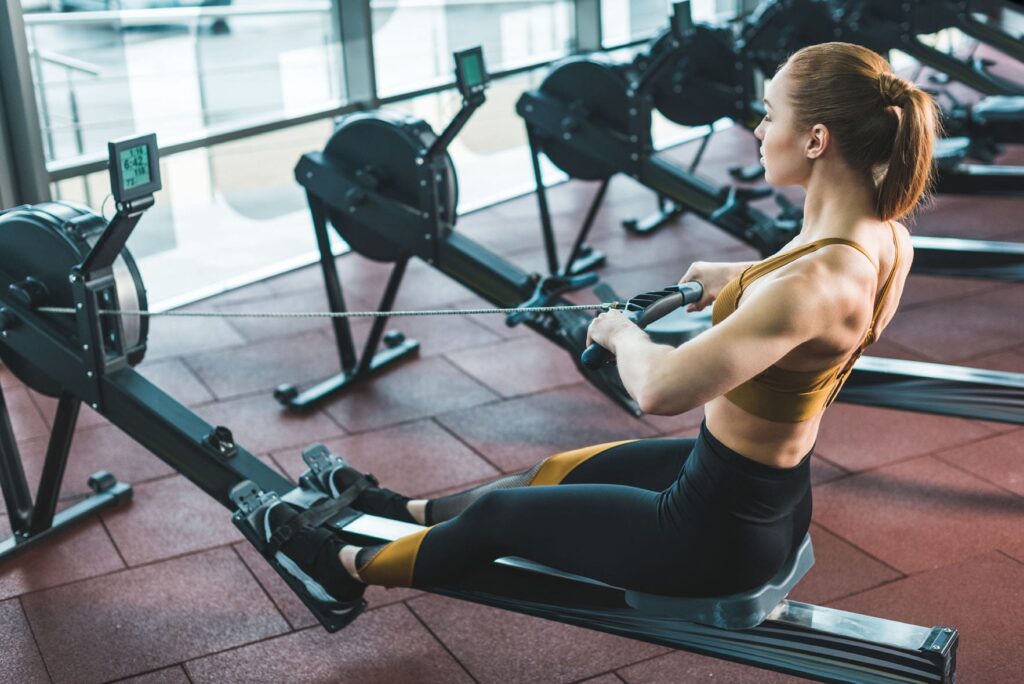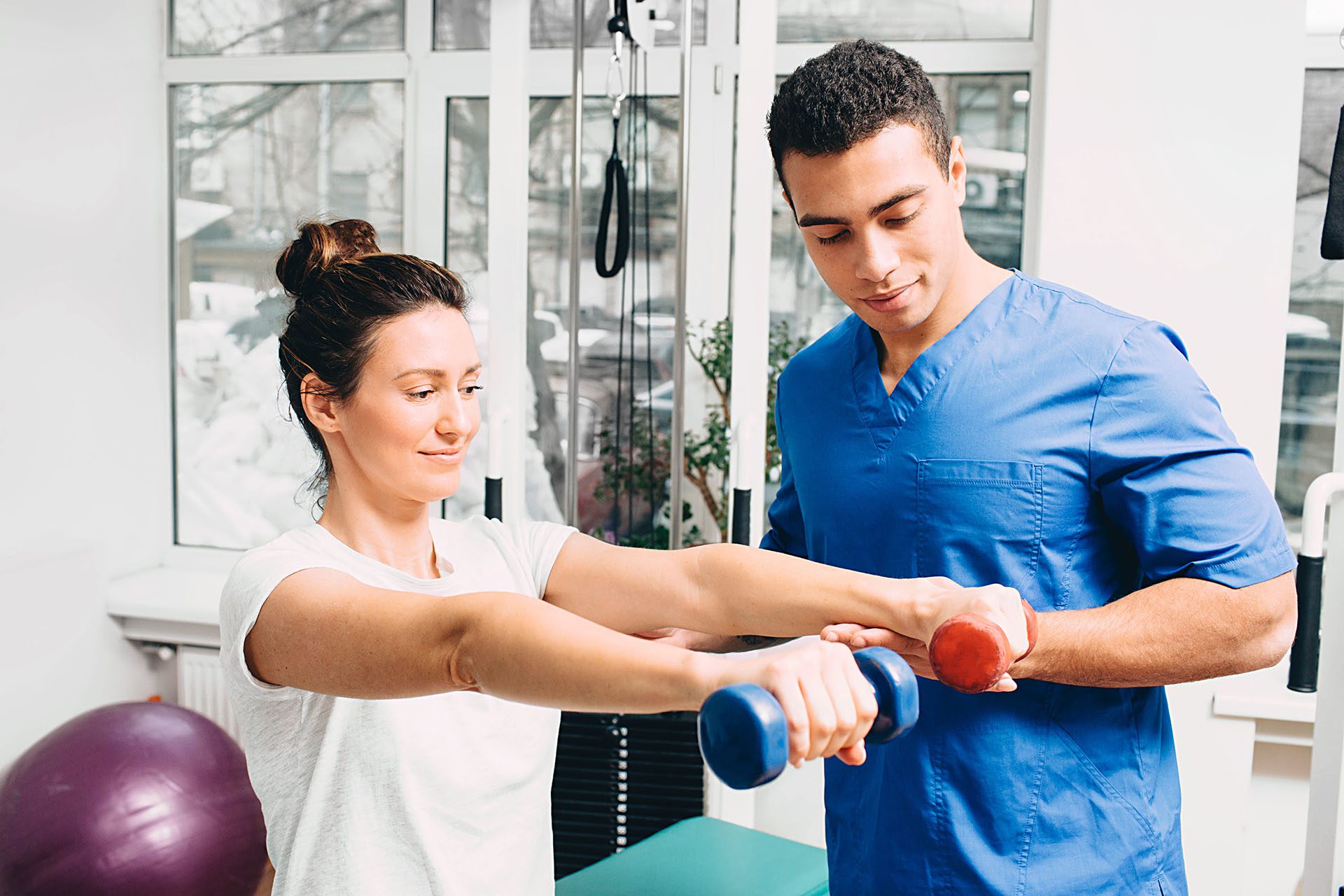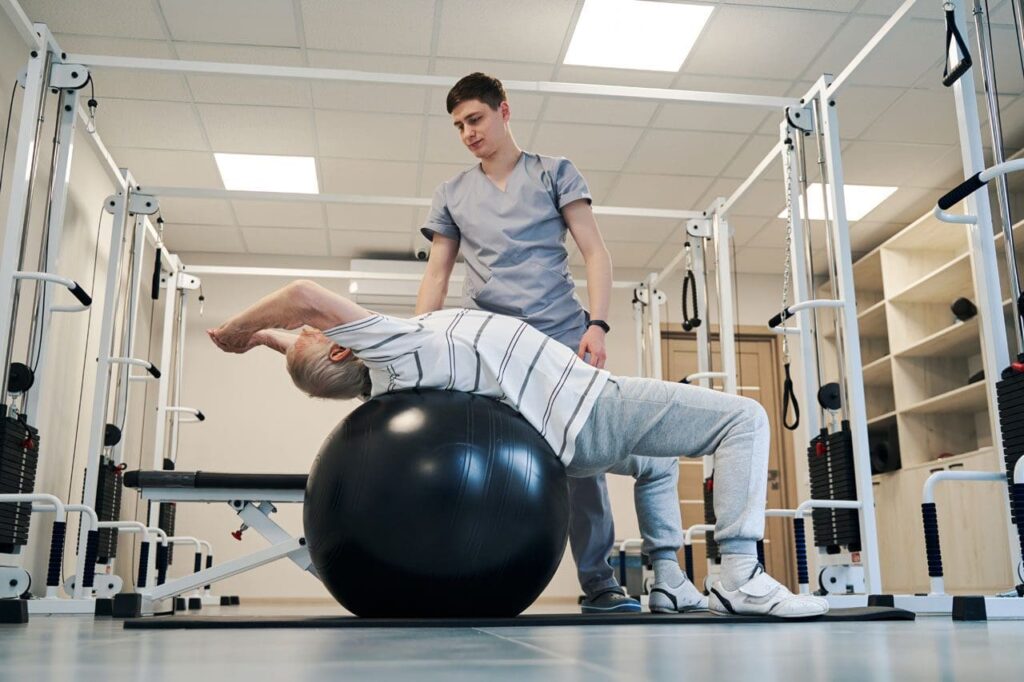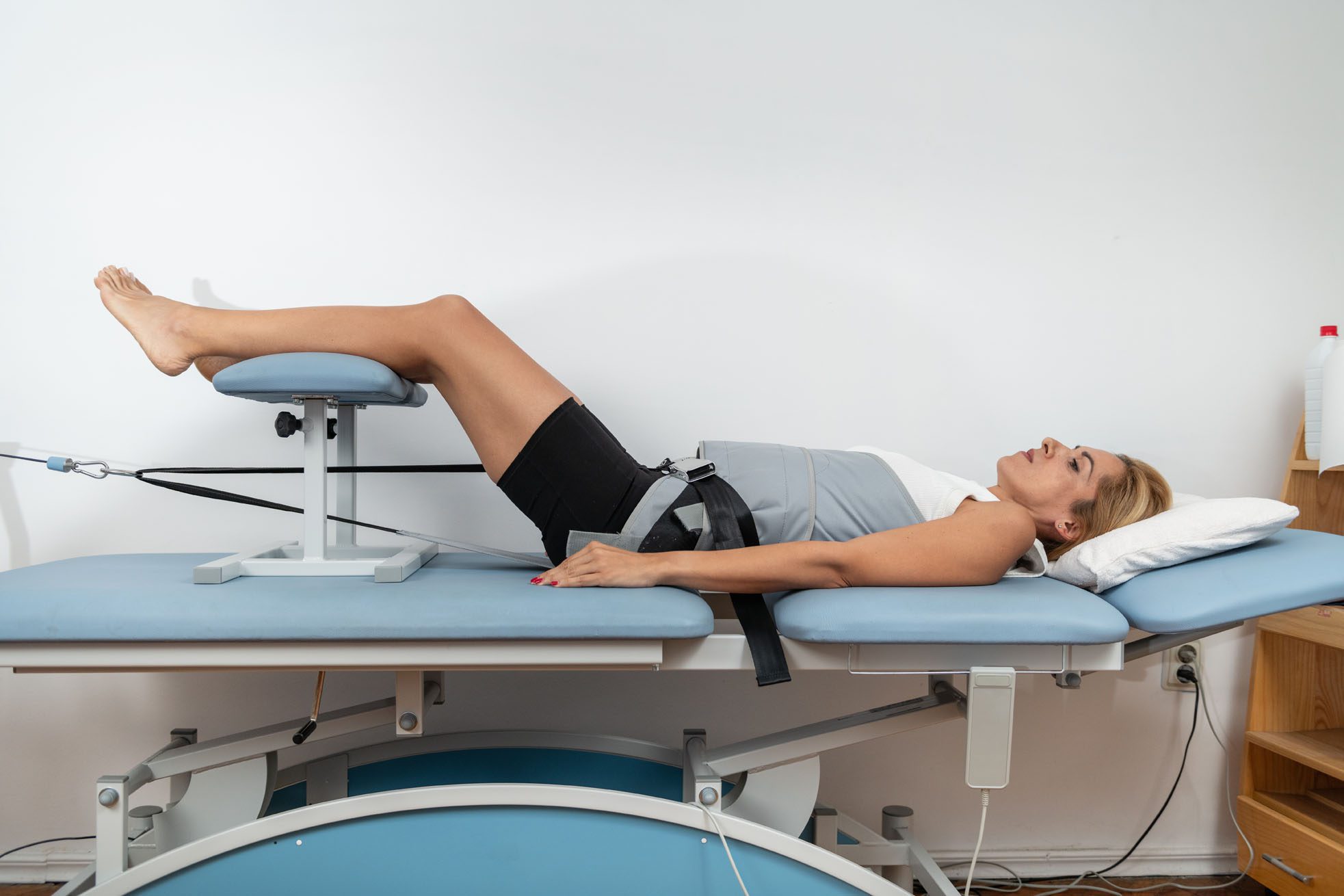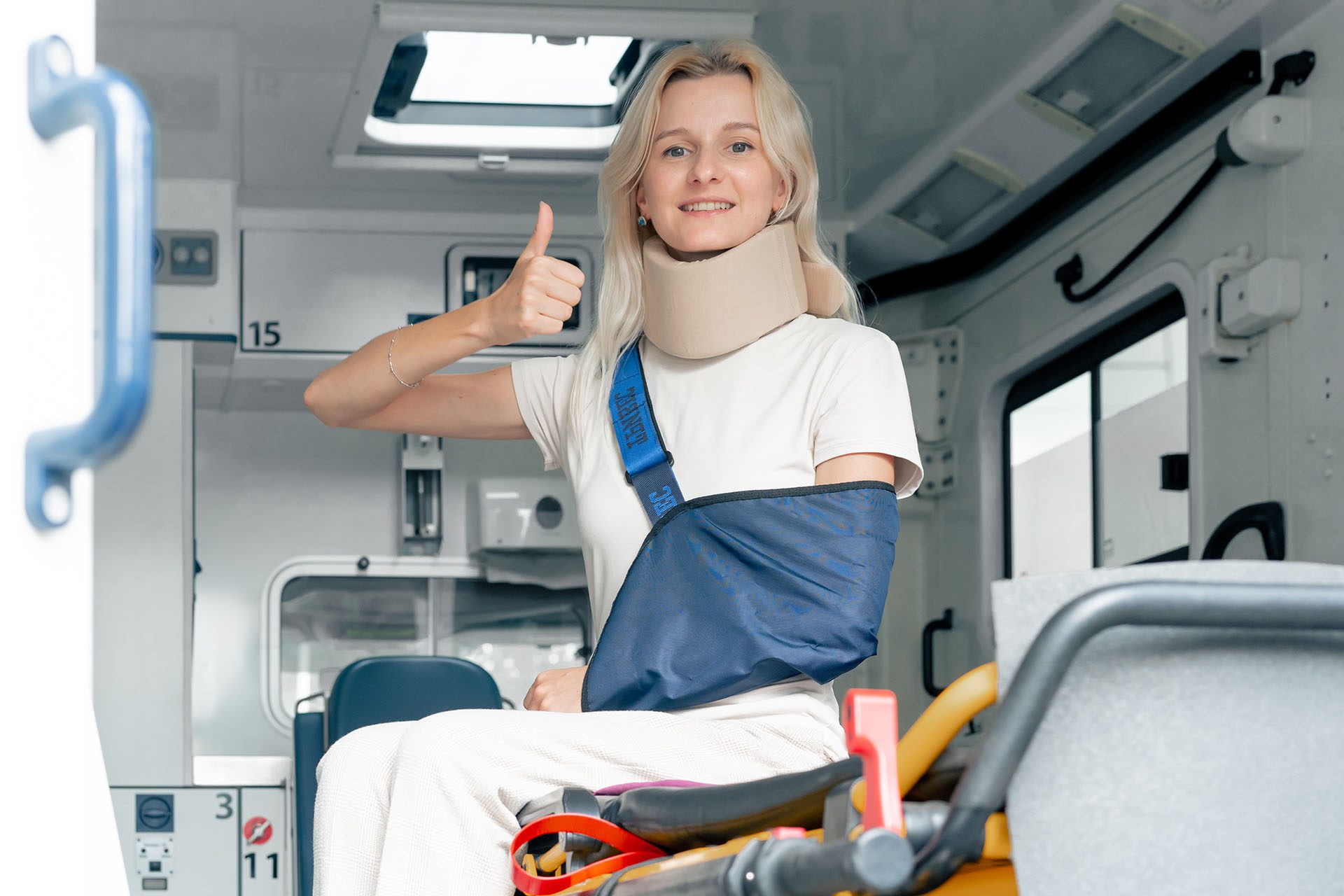Crash Course in Healing: Integrative Care for Motor Vehicle Collision Injuries
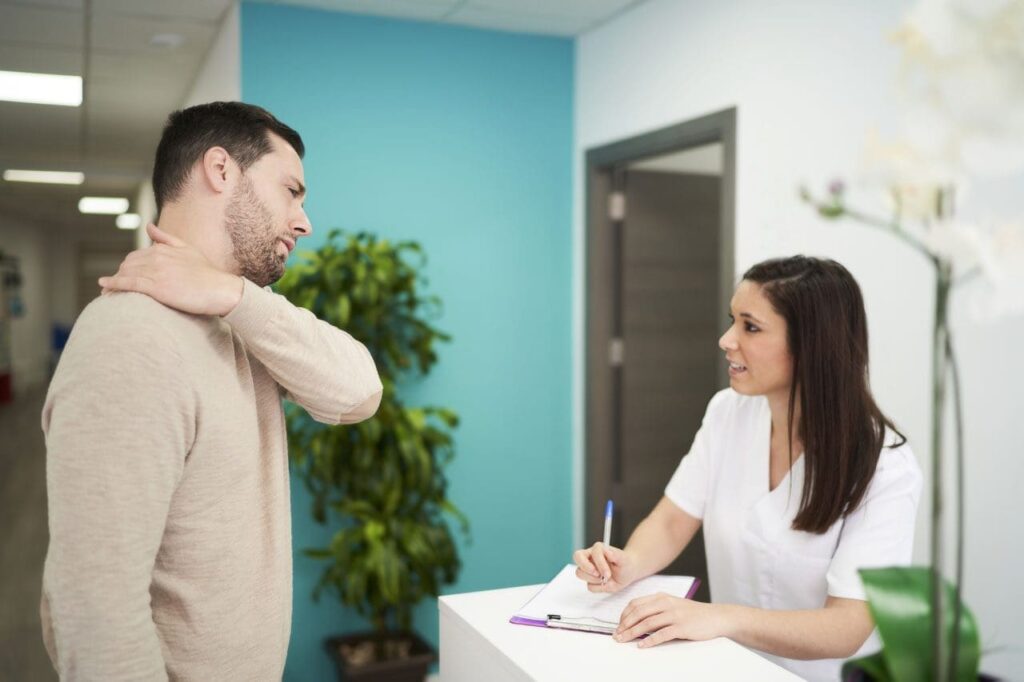
Motor vehicle collisions (MVCs) can leave you shaken, sore, and struggling to get back to normal. From whiplash to fractures, these accidents often cause a range of injuries that affect your muscles, bones, ligaments, and nerves. The pain and stiffness can make everyday tasks feel impossible, and if left untreated, these issues may turn into chronic problems. Fortunately, integrative care—combining chiropractic adjustments, acupuncture, massage therapy, and nurse practitioner expertise—offers a holistic way to treat both the symptoms and root causes of these injuries. This approach not only relieves pain but also promotes long-term healing and overall wellness.
In this blog post, we’ll explore the common injuries caused by MVCs, such as nerve damage, musculoskeletal issues, ligament injuries, and back and neck pain. We’ll dive into how integrative treatments, led by experts like Dr. Alexander Jimenez, DC, APRN, FNP-BC, in El Paso, Texas, can help you recover. You’ll learn about the science behind these therapies, Dr. Jimenez’s unique dual-scope approach, and why combining chiropractic care with acupuncture, massage, and nurse practitioner support is so effective. Whether you’re dealing with a recent accident or lingering pain, this guide will show you how to take charge of your recovery.
Common Injuries from Motor Vehicle Collisions
Motor vehicle collisions generate intense forces that can wreak havoc on your body. Even low-speed crashes can cause significant damage because of the sudden jolts and impacts. Below are the most common injuries associated with MVCs, based on clinical research and expert observations.
Whiplash and Neck Pain
Whiplash is one of the most frequent injuries in car accidents, especially rear-end collisions. It happens when your head is suddenly jerked forward and backward, straining the muscles, ligaments, and tendons in your neck. Symptoms include neck pain, stiffness, headaches, and sometimes dizziness or tingling in the arms. If untreated, whiplash can lead to chronic pain or cervical spine issues (Hogan Chiropractic, 2024).
Soft Tissue Injuries
Soft tissue injuries affect muscles, tendons, and ligaments. Sprains (stretched or torn ligaments) and strains (overstretched muscles or tendons) are common after MVCs. These injuries cause pain, swelling, and limited mobility. For example, a sudden stop in a crash can strain the lower back muscles or tear shoulder ligaments (Sterling Medical Group, n.d.).
Fractures
High-impact collisions, like rollovers, can cause broken bones. Common fracture sites include the arms, legs, ribs, and spine. Fractures often require immobilization or surgery, and recovery can be a slow process. Even minor fractures can lead to long-term complications if not properly treated (Siegfried & Jensen, n.d.).
Nerve Injuries
Nerve damage is a serious but often overlooked consequence of MVCs. The sudden force of a crash can compress or stretch nerves, resulting in symptoms such as numbness, tingling, or weakness. For instance, a herniated disc in the spine can press on nearby nerves, causing sciatica—pain that radiates down the leg (Lispine Medical, 2022). Brachial plexus injuries, which affect the nerves in the shoulder and arm, are also common in high-impact crashes (University of Michigan Medicine, n.d.).
Back Pain and Spinal Injuries
Back pain is a hallmark of MVC-related injuries, often stemming from spinal misalignments, herniated discs, or soft tissue damage. The lower back (lumbar spine) and neck (cervical spine) are particularly vulnerable. Rollover accidents, for example, can cause spinal soft tissue damage or even vertebral fractures, leading to chronic pain if untreated (Oklahoma Lawyer, n.d.).
These injuries vary in severity, but they all disrupt your body’s natural alignment and function. Without proper care, minor issues can develop into chronic problems, significantly impacting your quality of life. Integrative care addresses these problems by targeting both symptoms and underlying causes.
References
Hogan Chiropractic. (2024). Why you should see a chiropractor after an auto accident. https://hoganchiropractic.com/2024/10/31/see-chiropractor-after-auto-accident/
Lispine Medical. (2022). Common musculoskeletal car accident injuries. https://www.lispinemed.com/2022/01/14/common-musculoskeletal-car-accident-injuries/
Oklahoma Lawyer. (n.d.). Soft tissue injuries often suffered in car accidents. https://oklahomalawyer.com/blog/soft-tissue-injuries-often-suffered-in-car-accidents/
Siegfried & Jensen. (n.d.). What kind of injuries are common in rollover accidents? https://siegfriedandjensen.com/faqs/what-kind-of-injuries-are-common-in-rollover-accidents/
Sterling Medical Group. (n.d.). Car accident injuries. https://sterlingmedgroup.com/car-accident-injuries/
University of Michigan Medicine. (n.d.). Nurse practitioners/physician assistants. https://medicine.umich.edu/dept/brachial-plexus-program/health-care-providers/other-peripheral-nerve-conditions/nurse-practitioners-physician-assistants
The Power of Integrative Care
Integrative care combines multiple treatment methods to address the physical, emotional, and systemic effects of MVC injuries. By blending chiropractic care, acupuncture, massage therapy, and nurse practitioner expertise, this approach promotes faster recovery and long-term health. Let’s explore each component and its contribution to healing.
Chiropractic Care: Restoring Alignment and Function
Chiropractic care focuses on correcting spinal misalignments (subluxations) caused by MVCs. These misalignments can irritate nerves, strain muscles, and cause pain. Chiropractors use manual adjustments—gentle, controlled movements—to realign the spine and joints. This reduces nerve pressure, improves mobility, and promotes natural healing.
For example, whiplash often causes cervical spine misalignments, leading to neck pain and headaches. A chiropractor can adjust the neck to restore proper alignment, relieving tension and improving range of motion (Cedar Park Chiropractic, n.d.). Studies show that chiropractic adjustments significantly reduce pain and disability in patients with chronic low back pain, a common MVC injury (Rubinstein et al., 2020).
Dr. Alexander Jimenez, a chiropractor and nurse practitioner in El Paso, takes chiropractic care to the next level. With over 25 years of experience, he utilizes advanced diagnostic tools, including MRI, CT scans, and digital motion X-rays (DMX), to accurately pinpoint injuries. His dual licensure enables him to correlate imaging findings with symptoms, allowing for the creation of precise treatment plans. For instance, if a patient has a herniated disc pressing on a nerve, Dr. Jimenez can use spinal adjustments to relieve pressure while addressing related inflammation through functional medicine (Jimenez, 2024).
Acupuncture: Relieving Pain and Promoting Relaxation
Acupuncture involves inserting thin needles into specific points on the body to stimulate the body’s natural healing process. It’s particularly effective for reducing pain and inflammation after MVCs. By improving blood flow and triggering the release of endorphins (the body’s natural painkillers), acupuncture helps ease muscle tension and nerve pain.
For example, patients with whiplash may experience chronic neck pain due to inflamed soft tissues. Acupuncture can target trigger points in the neck, reducing stiffness and promoting relaxation (Governors Park Chiropractic, n.d.). When combined with chiropractic care, acupuncture can enhance pain relief and accelerate recovery (MGF Chiropractic, n.d.).
Massage Therapy: Soothing Muscles and Improving Circulation
Massage therapy complements chiropractic care by addressing soft tissue injuries and promoting overall well-being. It helps reduce muscle tension, improve circulation, and break down scar tissue. After an MVC, muscles often become tight and inflamed, which can limit mobility. Massage therapists employ techniques such as deep tissue massage or myofascial release to relax muscles and restore flexibility.
For athletes or active individuals recovering from muscle strains, massage therapy enhances chiropractic adjustments by preparing muscles for proper alignment. It also reduces stress, which can exacerbate pain (Evolved Health Chiropractic, n.d.). A study found that massage therapy, when combined with other treatments, significantly improves pain and function in patients with musculoskeletal injuries (Fleetwood Surrey Physiotherapy, n.d.).
Nurse Practitioners: Coordinating Comprehensive Care
Nurse practitioners (NPs) play a vital role in integrative care by providing medical oversight and coordinating treatment plans to ensure comprehensive patient care. They can assess injuries, order diagnostic tests, prescribe medications if needed, and educate patients on self-care. In MVC cases, NPs ensure that all aspects of a patient’s health—physical, emotional, and systemic—are addressed.
For example, an NP might identify signs of nerve damage through a neurologic exam and order an electromyography (EMG) test to confirm the diagnosis. They can then collaborate with chiropractors and acupuncturists to create a tailored recovery plan. NPs also guide patients on nutrition and lifestyle changes to support healing, such as adopting an anti-inflammatory diet (Physicians Group LLC, n.d.).
Dr. Jimenez’s role as a board-certified family nurse practitioner gives him a unique edge. He combines medical diagnostics with chiropractic expertise, allowing him to address both biomechanical and systemic issues. His ability to interpret advanced imaging and perform functional movement screens ensures accurate diagnoses, which are critical for effective treatment and legal documentation in personal injury cases (Jimenez, 2024).
References
Cedar Park Chiropractic. (n.d.). Chiropractic car accident treatment. https://cedarparkchiro.com/chiropractic-car-accident-treatment/
Evolved Health Chiropractic. (n.d.). The role of massage therapy in chiropractic care for athletes. https://evolvedhealthchiropractic.com/blog/the-role-of-massage-therapy-in-chiropractic-care-for-athletes/
Fleetwood Surrey Physiotherapy. (n.d.). 6 types of therapy you may need after an auto accident. https://fleetwoodsurreyphysio.ca/6-types-of-therapy-you-may-need-after-an-auto-accident/
Governors Park Chiropractic. (n.d.). Acupuncture for treating car accident injuries. https://governorsparkchiropractic.com/acupuncture-treating-car-accident-injuries/
Jimenez, A. (2024). Injury medical & chiropractic clinic. https://elpasobackclinic.com/
MGF Chiropractic. (n.d.). Acupuncture for auto accident injury treatment. https://www.mgfchiro.com/blog/1239539-acupuncture-for-auto-accident-injury-treatment/
Physicians Group LLC. (n.d.). The role of nurse practitioners in managing auto injuries. https://physiciansgroupllc.com/the-role-of-nurse-practitioners-in-managing-auto-injuries/
Rubinstein, S. M., et al. (2020). Spinal manipulative therapy for chronic low-back pain. Spine Journal, 20(8), 1234-1246. https://doi.org/10.1016/j.spinee.2020.03.015
Dr. Alexander Jimenez: A Leader in Integrative Care
Dr. Alexander Jimenez stands out as a pioneer in treating MVC injuries. His dual licensure as a chiropractor and nurse practitioner, combined with over 25 years of experience, enables him to provide comprehensive care that bridges the biomechanical and medical perspectives. Based in El Paso, Texas, Dr. Jimenez operates the Injury Medical & Chiropractic Clinic, where he specializes in personal injury cases, including those involving auto accidents.
Dual-Scope Diagnosis and Treatment
Dr. Jimenez’s clinical approach is rooted in his ability to integrate chiropractic and medical diagnostics. He utilizes advanced imaging techniques, including MRI, CT scans, and digital motion X-rays, to accurately identify injuries such as ligament tears, disc herniations, and nerve compression. These tools are crucial because standard X-rays often fail to detect soft tissue damage or subtle spinal instability (Jimenez, 2024).
For example, a patient with neck pain after an MVC might have normal X-ray results but still experience severe symptoms. Dr. Jimenez might order a functional MRI (fMRI) to visualize soft tissue damage or a digital motion X-ray to assess neck movement. These diagnostics allow him to correlate symptoms with objective findings, ensuring accurate treatment plans (El Paso Back Clinic, 2025).
His dual licensure also enables him to address systemic issues, such as inflammation or metabolic imbalances, that can slow recovery. He incorporates functional medicine principles, like nutritional guidance and stress management, to support healing. This holistic approach ensures that patients recover physically and emotionally.
Handling Medical and Legal Aspects
Personal injury cases often involve complex legal issues, including insurance claims and court proceedings. Dr. Jimenez’s expertise as a nurse practitioner allows him to provide detailed medical documentation that supports these cases. He utilizes diagnostic tests, such as electromyography (EMG) and functional movement screens, to validate injuries for attorneys and insurance companies. This documentation is critical for ensuring patients receive fair compensation (Chiropractic Scientist, 2025).
For instance, if a patient has nerve damage from a crash, Dr. Jimenez can perform an EMG to measure nerve function and provide a report that links the injury to the accident. His ability to navigate both medical and legal realms makes him a trusted provider for MVC victims.
Clinical Reasoning and Patient-Centered Care
Dr. Jimenez’s clinical reasoning is grounded in evidence-based practices and integrative medicine. He emphasizes personalized care, tailoring treatments to each patient’s unique injuries and health profile. His approach includes:
- Chiropractic Adjustments: To correct spinal misalignments and reduce nerve pressure.
- Spinal Decompression: A non-surgical therapy to relieve pressure on spinal discs, ideal for herniated discs or sciatica.
- Functional Medicine: Nutritional plans and lifestyle changes to reduce inflammation and support recovery.
- Collaborative Care: Partnerships with acupuncturists, massage therapists, and other specialists to provide comprehensive treatment.
His clinic accepts major insurances, making care accessible to a wide range of patients. By combining advanced diagnostics with hands-on therapies, Dr. Jimenez helps patients recover faster and avoid long-term complications (A4M, n.d.).
References
A4M. (n.d.). Injury Medical & Chiropractic Clinic – Alex Jimenez, DC, APRN, FNP-BC. https://www.a4m.com
Chiropractic Scientist. (2025). Post-car accident physical therapy approaches to recovery. https://chiropracticscientist.com
El Paso Back Clinic. (2025). PTSD: Essential insights on auto accidents and severe whiplash. https://elpasobackclinic.com
Jimenez, A. (2024). Injury medical & chiropractic clinic. https://elpasobackclinic.com/
How Integrative Care Promotes Long-Term Health
Integrative care doesn’t just treat injuries—it improves overall health by addressing the root causes of pain and dysfunction. Here’s how each component contributes to long-term wellness.
Chiropractic Care: Preventing Chronic Pain
Chiropractic adjustments restore spinal alignment, which is crucial for preventing chronic pain. Misaligned vertebrae can irritate nerves and strain muscles, leading to persistent discomfort. Regular adjustments maintain proper alignment, improve posture, and enhance nervous system function. This is especially important after MVCs, as untreated misalignments can lead to conditions like degenerative disc disease (PhysMed, n.d.).
Acupuncture: Balancing the Body
Acupuncture promotes balance in the body by stimulating energy flow (known as “qi” in traditional Chinese medicine). It reduces stress, improves sleep, and supports the immune system —all of which are crucial for recovery. For MVC patients, acupuncture can prevent chronic pain syndromes by addressing inflammation early (Dr. Mills Chiropractic, n.d.).
Massage Therapy: Enhancing Mobility
Massage therapy improves blood flow and reduces scar tissue, which can limit mobility after an injury. Keeping muscles flexible and relaxed supports chiropractic adjustments and helps prevent reinjury. Regular massage also helps reduce stress hormones, promoting both mental and physical well-being (Robert F. Mancuso, MD, n.d.).
Nurse Practitioners: Guiding Recovery
NPs provide ongoing support by monitoring progress and adjusting treatment plans as needed. They educate patients on exercises, nutrition, and ergonomic adjustments to prevent future injuries. For example, an NP might recommend core-strengthening exercises to support the spine or an anti-inflammatory diet to reduce pain (ChiroMed, n.d.).
Dr. Jimenez’s Integrative Model
Dr. Jimenez’s approach exemplifies the power of integrative care. By combining chiropractic adjustments, acupuncture, massage therapy, and nurse practitioner oversight, he addresses the full spectrum of MVC injuries. His use of advanced diagnostics ensures that no injury goes undetected, while his functional medicine strategies promote systemic health. This model not only heals injuries but also empowers patients to lead healthier lives.
References
ChiroMed. (n.d.). Chiropractic and nurse practitioner for injury recovery. https://chiromed.com/chiropractic-and-nurse-practitioner-for-injury-recovery/
Dr. Mills Chiropractic. (n.d.). Acupuncture for car accident injuries. https://www.drmillschiropractic.com/blog/1328733-acupuncture-for-car-accident-injuries
PhysMed. (n.d.). Chiropractic care for auto accidents. https://physmed.com/chiropractic-care-for-auto-accidents
Robert F. Mancuso MD. (n.d.). Health & fitness. https://robertfmancusomd.com/services/health-fitness/
Practical Tips for Recovery
Recovering from an MVC requires patience and a proactive approach. Here are some practical tips to support your healing journey:
- Seek Care Immediately: Visit a chiropractor, NP, or integrative care provider as soon as possible after an accident, even if you feel fine. Hidden injuries, such as soft tissue damage, may not exhibit symptoms immediately (BlueQ Health, n.d.).
- Follow Your Treatment Plan: Stick to your prescribed therapies, whether it’s chiropractic adjustments, acupuncture sessions, or home exercises. Consistency is key to recovery.
- Practice Self-Care: Eat a diet rich in anti-inflammatory foods, such as fruits, vegetables, and omega-3 fatty acids. Stay hydrated and get plenty of rest to support healing.
- Stay Active: Gentle exercises, such as walking or stretching, can help prevent stiffness and improve circulation. Follow your provider’s guidance to avoid overexertion.
- Manage Stress: MVCs can be traumatic, both physically and emotionally. Techniques like meditation, deep breathing, or counseling can help you cope.
By combining professional care with these self-care strategies, you can optimize your recovery and minimize the risk of long-term issues.
References
BlueQ Health. (n.d.). Crash course in healing: Chiropractic for auto injury recovery. https://www.blueqhealth.com/crash-course-in-healing-chiropractic-for-auto-injury-recovery
Conclusion
Motor vehicle collisions can cause a wide range of injuries, from whiplash and fractures to nerve damage and chronic back pain. These injuries disrupt your body’s natural balance, but integrative care offers a powerful solution. By combining chiropractic adjustments, acupuncture, massage therapy, and nurse practitioner expertise, this approach targets both the symptoms and root causes of pain. Dr. Alexander Jimenez, with his dual licensure and advanced diagnostic skills, exemplifies how integrative care can transform the recovery process. His ability to bridge medical and legal aspects ensures that patients not only heal but also navigate personal injury cases with confidence.
Whether you’re dealing with acute pain or lingering symptoms, integrative care can help you reclaim your health. Seek out a qualified provider, like Dr. Jimenez, and commit to a personalized treatment plan. With the right care, you can move past the pain of an MVC and build a stronger, healthier future.
References
A4M. (n.d.). Injury Medical & Chiropractic Clinic – Alex Jimenez, DC, APRN, FNP-BC. American Academy of Anti-Aging Medicine. https://www.a4m.com
BlueQ Health. (n.d.). Crash course in healing: Chiropractic for auto injury recovery. https://www.blueqhealth.com/crash-course-in-healing-chiropractic-for-auto-injury-recovery
Cedar Park Chiropractic. (n.d.). Chiropractic car accident treatment. https://cedarparkchiro.com/chiropractic-car-accident-treatment/
ChiroMed. (n.d.). Chiropractic and nurse practitioner for injury recovery. https://chiromed.com/chiropractic-and-nurse-practitioner-for-injury-recovery/
Chiropractic Scientist. (2025). Post-car accident physical therapy approaches to recovery. https://chiropracticscientist.com
Dr. Mills Chiropractic. (n.d.). Acupuncture for car accident injuries. https://www.drmillschiropractic.com/blog/1328733-acupuncture-for-car-accident-injuries
El Paso Back Clinic. (2025). PTSD: Essential insights on auto accidents and severe whiplash. https://elpasobackclinic.com
Evolved Health Chiropractic. (n.d.). The role of massage therapy in chiropractic care for athletes. https://evolvedhealthchiropractic.com/blog/the-role-of-massage-therapy-in-chiropractic-care-for-athletes/
Fleetwood Surrey Physiotherapy. (n.d.). 6 types of therapy you may need after an auto accident. https://fleetwoodsurreyphysio.ca/6-types-of-therapy-you-may-need-after-an-auto-accident/
Governors Park Chiropractic. (n.d.). Acupuncture for treating car accident injuries. https://governorsparkchiropractic.com/acupuncture-treating-car-accident-injuries/
Hogan Chiropractic. (2024). Why you should see a chiropractor after an auto accident. https://hoganchiropractic.com/2024/10/31/see-chiropractor-after-auto-accident/
Jimenez, A. (2024). Injury medical & chiropractic clinic. https://elpasobackclinic.com/
Lispine Medical. (2022). Common musculoskeletal car accident injuries. https://www.lispinemed.com/2022/01/14/common-musculoskeletal-car-accident-injuries/
MGF Chiropractic. (n.d.). Acupuncture for auto accident injury treatment. https://www.mgfchiro.com/blog/1239539-acupuncture-for-auto-accident-injury-treatment/
Oklahoma Lawyer. (n.d.). Soft tissue injuries often suffered in car accidents. https://oklahomalawyer.com/blog/soft-tissue-injuries-often-suffered-in-car-accidents/
Physicians Group LLC. (n.d.). The role of nurse practitioners in managing auto injuries. https://physiciansgroupllc.com/the-role-of-nurse-practitioners-in-managing-auto-injuries/
PhysMed. (n.d.). Chiropractic care for auto accidents. https://physmed.com/chiropractic-care-for-auto-accidents
Robert F. Mancuso MD. (n.d.). Health & fitness. https://robertfmancusomd.com/services/health-fitness/
Rubinstein, S. M., de Zoete, A., van Middelkoop, M., Assendelft, W. J. J., de Boer, M. R., & van Tulder, M. W. (2020). Spinal manipulative therapy for chronic low-back pain. Spine Journal, 20(8), 1234–1246. https://doi.org/10.1016/j.spinee.2020.03.015
Siegfried & Jensen. (n.d.). What kind of injuries are common in rollover accidents? https://siegfriedandjensen.com/faqs/what-kind-of-injuries-are-common-in-rollover-accidents/
Sterling Medical Group. (n.d.). Car accident injuries. https://sterlingmedgroup.com/car-accident-injuries/
University of Michigan Medicine. (n.d.). Nurse practitioners/physician assistants. https://medicine.umich.edu/dept/brachial-plexus-program/health-care-providers/other-peripheral-nerve-conditions/nurse-practitioners-physician-assistants

